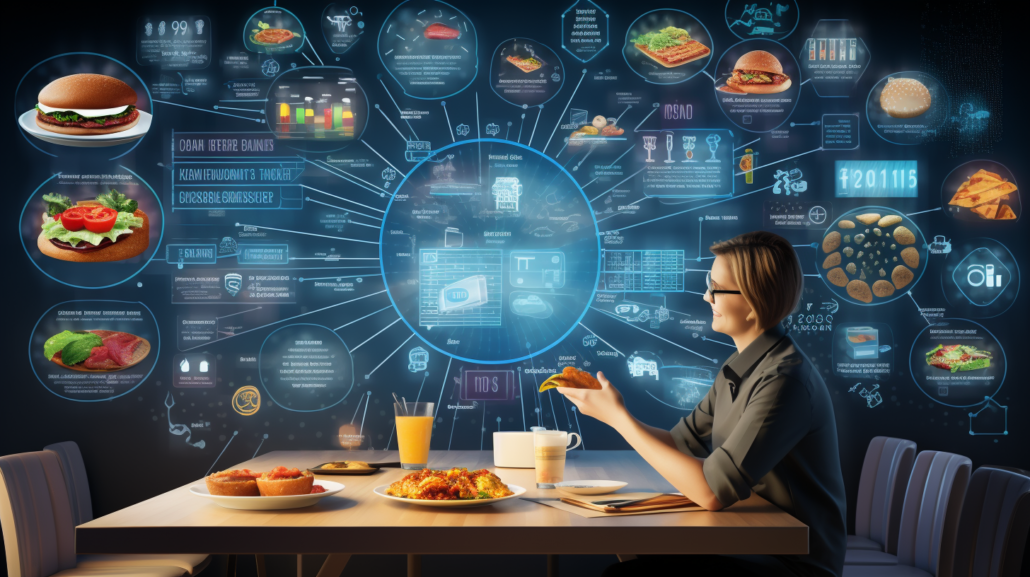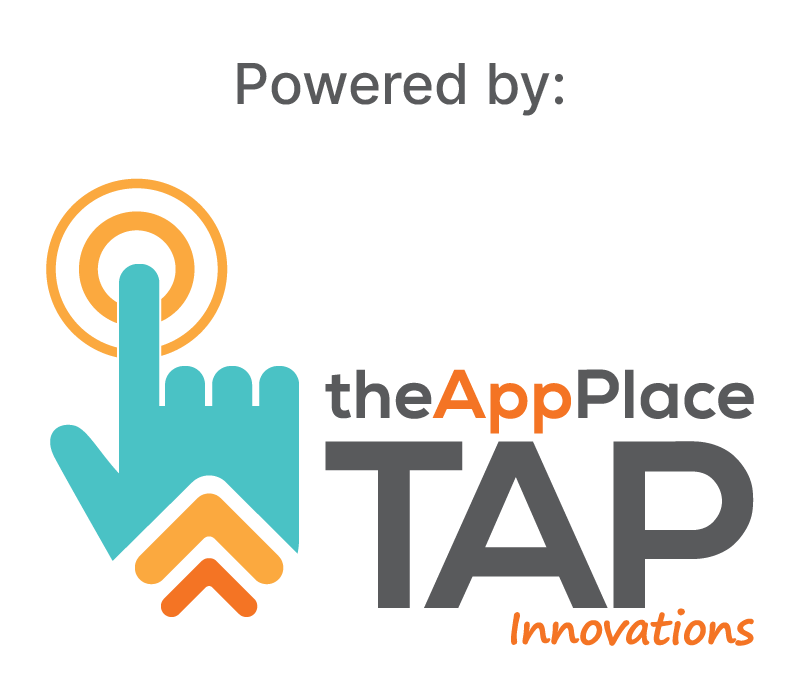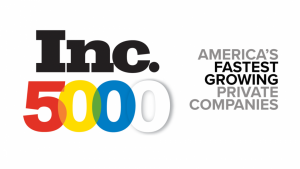Streamline your restaurant’s workflow with TAP Innovations’ application integrations services. Elevate efficiency, cut errors, and ensure swift employee payments. Step into a new era of restaurant management and unlock unparalleled operational fluidity.
Table of Contents
Part 1: Introduction
Part 2: Common Challenges and Pain Points
Part 3: The Role of Application Integration Services
Part 4: The TAP Innovations Solution
Part 5: Related Solutions or Services
Part 6: FAQs
Part 7: Conclusion
Part 1: Introduction
In the dynamic world of restaurant management, the recent shifts in the industry have seen an unprecedented focus on technology and integration. The latest developments indicate a profound transformation, moving from disjointed processes to more seamless operations that are both efficient and error-free. In this evolutionary phase, understanding the current state of restaurant operations and recognizing the vital role of integrated software solutions has become paramount for IT leaders aiming to drive their businesses forward.
Background of Restaurant Operations
1. Current Industry Insights
The contemporary setting of restaurant operations has become increasingly complex, demanding a new approach that embraces modernity while shedding the inefficiencies of the past. In recent times, the industry has witnessed a surge in technological advancements that have initiated a shift from manual to automated processes, especially in areas concerning time management and payroll administration.
2. The Need for Streamlined Operations
As we move forward, the necessity to streamline operations has become more pronounced. Business leaders are now tasked with the monumental duty of revamping their operational strategies to align with the evolving demands. Leveraging technology to optimize restaurant operations has emerged as a critical component, fostering not only efficiency but also paving the way for innovative approaches to longstanding issues.
Setting the Stage for Integrated Software Solutions
3. Technology as a Catalyst in Modern Businesses
In the modern business environment, technology stands as a beacon of innovation and progress. Bill Gates, the founder of Microsoft, once said, “Information technology and business are becoming inextricably interwoven. I don’t think anybody can talk meaningfully about one without the talking about the other.” This quote precisely captures the essence of the transformation we are witnessing in the restaurant industry. Technology has entrenched itself as an indispensable tool, promising advancements that extend beyond the traditional boundaries.
4. Significance of Application Integrations in Restaurant Operations
At the heart of this transformation lies the profound impact of application integrations in restaurant operations. These services aim to foster a seamless flow of information between various systems, facilitating better communication and cooperation between different sectors of the business. The integration services provided by companies like TAP Innovations have been pivotal in fostering this change, offering tailored solutions that address specific pain points in restaurant operations.
But as IT leaders stand on the cusp of this significant shift, one might wonder what lies beyond the integration of these sophisticated systems. Can the fusion of technology and business acumen indeed usher in a golden age of efficiency and innovation in restaurant operations?
Part 2: Common Challenges and Pain Points
In the ever-changing domain of restaurant operations, business leaders frequently encounter several persistent issues that hinder optimal performance and profitability. Recognizing and addressing these challenges forms a critical step in steering the industry towards a future where technology and innovation hold the reins. In this segment, we delve deep into these impediments, highlighting their impact on operations, and emphasizing the pressing need for a change spearheaded by application integration services.
Recognizing the Issues in Traditional Systems
1. Time Management Inefficiencies
In numerous instances, traditional systems fail to offer efficient time management solutions, resulting in a loss of productivity and increased operational costs. The lack of real-time data and analytics can further exacerbate this issue, making it difficult to monitor and adjust workflows in a timely manner.
2. Error-Prone Payroll Processes
Traditional payroll systems are often besieged with errors, stemming from manual data entry and inconsistent record-keeping. These errors not only lead to financial losses but also engender dissatisfaction among employees, impacting the overall morale of the workforce.
3. Synchronization Troubles Between Different Software
Another prevalent issue in the industry is the lack of effective synchronization between various software systems. This often results in data discrepancies and a lack of coherence in operations, making it challenging to maintain a smooth flow of information and thus hampering decision-making processes.
The Impact on Restaurant Operations
4. Detailing How These Challenges Affect Efficiency
These persistent challenges cast a significant shadow on the efficiency of restaurant operations. They create a ripple effect that permeates various aspects of the business, from time management to payroll processes, essentially crippling the potential for growth and innovation.
5. The Financial and Operational Repercussions
Financially, these issues can lead to substantial losses, with operations constantly being bogged down by inefficiencies and errors. Moreover, the operational repercussions are equally severe, with businesses struggling to maintain a steady pace and meet customer expectations, ultimately affecting the bottom line.
Highlighting the Need for Change
1. Increasing Demands for Streamlined Operations
As the industry evolves, the clamor for streamlined operations intensifies. Business leaders are now expected to foster environments where technology can flourish, promoting efficiency and reducing the margin of error significantly.
2. The Vision of Seamless Restaurant Operations
The ultimate goal is to realize a vision where restaurant operations are seamless, powered by technology that integrates effortlessly, offering solutions that are not only innovative but also foster sustainable growth. As Steve Jobs, co-founder of Apple Inc, once said, “Innovation distinguishes between a leader and a follower.” Embracing innovative application integration services thus emerges as the key to transitioning from traditional systems to more advanced, efficient, and cohesive operational frameworks.
Part 3: The Role of Application Integration Services
In the bustling domain of the restaurant industry, optimizing operations to meet the contemporary demands of efficiency and real-time responsiveness is essential. This critical transition is significantly empowered by Application Integration Services, which come to the fore as a transformative tool for modern businesses. In this segment, we will illuminate the functionalities and potent benefits that these services can bring to restaurant operations, providing business leaders with the knowledge to make informed decisions.
Overview of Application Integration Services
• Definition and Functionalities
Application Integration Services serve as a nexus between various software systems, facilitating seamless communication and data exchange between them. These services allow for an interconnected network where data flows freely, thus enhancing the fluidity of operations and reducing data silos. This network is characterized by enhanced functionalities such as automated workflows, centralized data repositories, and simplified IT architectures.
• Its Role in Enhancing Restaurant Operations
For restaurant operations, embracing these services means a step towards revolutionized management and execution of tasks. From streamlining inventory management to improving customer service through real-time updates, these integrations offer a palette of opportunities to optimize and innovate. The harmonized system not only fosters better decision-making but also aids in tailoring strategies that align with current market trends and customer preferences.
Benefits of Utilizing Application Integration Services
• Efficiency and Accuracy
Leveraging these services leads to heightened efficiency and accuracy in restaurant operations. It automates repetitive tasks, which minimizes human intervention and therefore reduces the potential for errors. Moreover, it ensures that every component of the business operates in harmony, translating to faster services and heightened customer satisfaction.
• Minimized Errors
The integration of applications drastically reduces the occurrence of errors which are commonplace in manual systems. By ensuring that data is consistent across various platforms, it negates the chances of discrepancies, which can often lead to financial and operational setbacks.
• Real-time Updates and Monitoring
In the dynamic environment of the restaurant industry, having access to real-time updates is a significant asset. Application Integration Services facilitate this by offering tools that allow for real-time monitoring of various aspects of the business, from inventory levels to sales metrics. This not only aids in proactive management but also in swiftly responding to any emerging issues or opportunities.
Bill Gates, the co-founder of Microsoft, rightly said, “Information technology and business are becoming inextricably interwoven. I don’t think anybody can talk meaningfully about one without talking about the other.” In the context of restaurant operations, this resonates profoundly as business leaders look to integrate technology seamlessly into their operational strategies through application integration services.
Part 4: The TAP Innovations Solution
In the demanding sector of restaurant operations, overcoming prevalent challenges necessitates a well-thought-out strategy fortified with reliable technological solutions. As business leaders venture into optimizing their processes through application integrations, a leading light in this endeavor is TAP Innovations. This segment meticulously details the avenues TAP Innovations opens for businesses and how its suite of solutions could potentially be the game-changer in the industry.
Introduction to TAP Innovations
Brief Background with Emphasis on Relevant History Points
Nestled in the competitive industry, TAP Innovations emerged as a cornerstone for businesses seeking robust Application Integration Services. With a remarkable history, TAP Innovations has managed to carve out a significant presence in the market, boasting over 300 customers dispersed across 25 industries and extending their services in 3 countries. The organization prides itself on an impressive customer rating of 4.8 out of 5, underlining their commitment to quality and customer satisfaction. Over the years, they have connected more than 2,500 systems, aiding businesses in interlinking operations seamlessly across over 1,500 locations.
The Suite of Solutions
• Detailed Insight into “Application Integration Services”
At the core of TAP Innovations’ offerings lies their expert Application Integration Services. These services are a confluence of technologies designed to enhance restaurant operations significantly. By creating a cohesive environment where various applications communicate and collaborate, businesses can anticipate a dramatic improvement in efficiency and productivity.
These integration services foster data centralization, which is pivotal in avoiding data discrepancies and ensuring that decision-makers have access to accurate, up-to-date information. Moreover, automated workflows facilitated by these integrations negate manual efforts, paving the way for a streamlined, error-free operational environment.
Illustrating how these Solutions Address the Pain Points Mentioned Earlier
As delineated in part 2, the contemporary restaurant industry faces a myriad of challenges, including data silos, lack of real-time updates, and high error rates due to manual processes. Here, TAP Innovations steps in as a beacon of hope, providing solutions that directly address these pain points:
• Enhanced Efficiency: Through automated workflows, businesses can operate at an optimized level, drastically reducing time spent on repetitive tasks and focusing on strategic initiatives instead.
• Real-time Updates and Monitoring: Leveraging the potential of application integrations, restaurants can now have a real-time pulse on various aspects of their operations, thereby enabling them to make swift and informed decisions.
• Error Minimization: By ensuring seamless integration and data consistency, TAP Innovations assists in minimizing errors, thereby safeguarding businesses from potential operational and financial setbacks.
“Technology and business, rather than being separate, are deeply interwoven aspects of modern industry,” remarked Sundar Pichai, CEO of Alphabet Inc., highlighting the undeniable interconnection between technology and business today.
Part 5: Related Solutions or Services
In the pursuit of mitigating the prevalent challenges in restaurant operations elucidated in part 2, business leaders are perpetually on the lookout for innovative and reliable solutions. TAP Innovations, a distinguished entity in the sphere of Application Integration Services, stands as a beacon, propelling the industry forward with its bespoke solutions meticulously designed to streamline operations and alleviate the pain points. Let us delve deeper into the offerings and the impact they can potentially wield in transforming restaurant operations.
Services Offered by TAP Innovations
Specific Solutions that Address the Challenges Highlighted in Part 2
In addressing the challenges pinpointed in part 2, TAP Innovations brings forth a gamut of solutions centered around Application Integrations that are geared towards enhancing the efficiency and effectiveness of restaurant operations. These solutions encompass:
• Data Centralization: Facilitating a unified view of data, aiding in the elimination of data silos and fostering informed decision-making processes.
• Real-time Monitoring: Empowering businesses with the ability to monitor operations in real-time, thus ensuring swift responsiveness to any operational fluctuations.
• Automated Workflows: Incorporating automated workflows that negate the necessity for manual interventions, significantly reducing the scope of errors and enhancing productivity.
• The Proven Effectiveness in Streamlining Restaurant Operations
TAP Innovations’ expertise in providing Application Integration Services comes with a proven track record of efficacy. By integrating disparate systems and fostering seamless communication between various applications, they have played a pivotal role in metamorphosing restaurant operations into a streamlined, cohesive unit. The effectiveness of these services manifests in:
• Enhanced Operational Efficiency: By automating repetitive tasks, the staff can focus on more strategic initiatives, thereby fostering a culture of innovation and growth.
• Increased Profit Margins: Through the eradication of manual errors and inefficiencies, restaurants witness a notable increment in profit margins, as operations are optimized to the highest degree.
• Customer Satisfaction: Ultimately, the improved operational efficacy translates to heightened customer satisfaction, as services become more prompt, personalized, and efficient.
As Bill Gates once stated, “Information technology and business are becoming inextricably interwoven. I don’t think anybody can talk meaningfully about one without talking about the other.” This quote holds profound relevance in the contemporary business ecosystem, where the amalgamation of the right technology with business operations can pave the path for unprecedented growth and success.
Part 6: FAQs
In the dynamic world of restaurant operations, leaders often grapple with various complex aspects. The integration of advanced software solutions can be a game-changer, fostering efficiency and mitigating common issues that plague the industry. As business leaders navigate through these waters, several questions often arise. Here, we address some of the most pertinent FAQs that can shed light on the monumental role that application integration services can play in enhancing restaurant operations:
1. What are the key benefits of integrating software solutions in restaurant operations?
• Streamlining processes and enhancing efficiency: Incorporating software solutions in restaurant operations can significantly streamline processes, facilitating smoother workflows and better efficiency, which are vital for optimal business performance.
2. How do application integrations services enhance time management in restaurants?
• Facilitating timely and accurate payroll processes: By leveraging application integration services, restaurants can manage time more effectively. These services allow for an accurate and timely payroll process, ensuring that employees are compensated correctly and promptly, which, in turn, boosts morale and productivity.
3. Can integrating software solutions help in reducing errors in restaurant operations?
• Minimizing errors through seamless synchronization of various systems: Indeed, integrating software solutions can substantially reduce errors in restaurant operations. It promotes the seamless synchronization of various systems, reducing the chance of manual errors and ensuring that all components work harmoniously for an error-free operation.
4. How can integration services contribute to customer satisfaction?
• Enhancing customer experiences through personalized services: Application integration services enable restaurants to offer personalized services by efficiently managing customer data. It facilitates better customer relationship management, leading to improved satisfaction and retention rates.
5. Are application integration services cost-effective for restaurants?
• Offering cost-effective solutions through optimized operations: Yes, investing in application integration services can be cost-effective in the long run. These services allow for streamlined operations and reduced manual labor, potentially leading to substantial cost savings.
The late Steve Jobs, co-founder of Apple Inc., emphasized the importance of integration when he remarked, “Great things in business are never done by one person; they’re done by a team of people.” This notion holds true for the sphere of restaurant operations, where integrated software solutions act as a cohesive team, working in unison to achieve operational excellence.
Part 7: Conclusion
In the rapidly evolving sector of restaurant operations, the nuances of staying ahead of the curve cannot be understated. As we wrap up this discourse, it becomes clear that the necessity for integration within the restaurant sector is more vital than ever. It’s a strategic imperative that echoes the sentiments of Bill Gates, co-founder of Microsoft, who once said, “Information technology and business are becoming inextricably interwoven. I don’t think anybody can talk meaningfully about one without talking about the other.” In this vein, we delve into summarizing the pivotal elements that underline the necessity of integration in restaurant operations.
Summarizing the Necessity of Integration
• Recap of the critical challenges: In the preceding segments, we dissected the numerous challenges that plague the restaurant industry. From time management constraints to the surmounting errors in operations, business leaders are constantly seeking viable solutions. Integrating sophisticated software solutions not only addresses these challenges but also paves the way for a seamless operational flow, propelling restaurants towards a trajectory of sustained growth.
• The solution presented by integrated software: Through the lens of Application Integration Services, it becomes evident that integrated software stands as a beacon of innovation and efficiency. These services have the propensity to revamp the core of restaurant operations, offering a more streamlined, error-free, and customer-centric approach. In essence, the synergy created by integrated systems is a linchpin in fostering a competitive edge in the modern restaurant sector.
Closing Remarks and Future Insights
As we venture further into the digital age, it is incumbent upon business leaders to harness the potential of Application Integration Services. These services are not merely tools but essential partners in navigating the complex terrains of restaurant operations. The future beckons with promises of greater efficiencies, enhanced customer satisfaction, and operational excellence.
Business leaders who are keen on transcending the traditional barriers in restaurant operations should consider aligning with a seasoned partner in the domain. In this regard, TAP Innovations emerges as a trustworthy ally, boasting a rich history of serving over 300 customers across 25 industries in 3 countries. With a stellar customer rating of 4.8 out of 5 and a remarkable track record of connecting more than 2,500 systems across over 1,500 locations, they stand as a beacon of reliability and expertise in the field.







